Governors Arts Awards for Excellence in Jackson in 1999
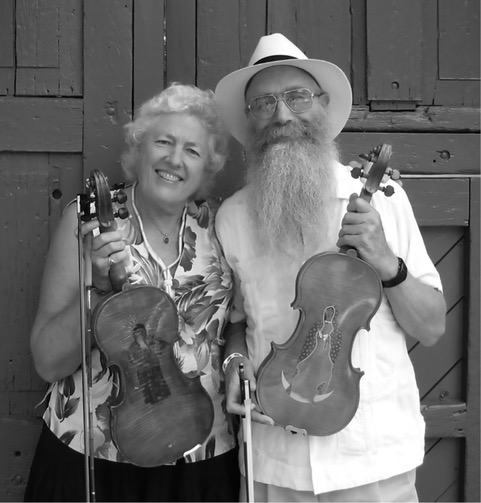
Bayou Seco of Silver City, Artists, Music: Ken Keppeler and Jeanie McLerie, known the world over every bit Bayou Seco, are not but extraordinary performers but they are ambassadors of New United mexican states music. They take made significant contributions to New Mexico past preserving the cultural heritage of Hispanic and Cowboy folk music, and bringing it to life for future generations through their performances and teaching. McLerie has been a professional musician since 1962, performing in the United States, Canada and Europe with the groups Sandy & Jeanie, The Harmony Sisters and the Delta Sisters. For more than thirty years, she has taught fiddle instruction to children through "The Fiddling Friends," which focuses on an international repertoire of dabble styles and music, with an accent on the sources of the music. Keppeler, a fourth generation Southwesterner with roots in New Mexico, Arizona and California, grew up with the music of the region and has been a professional musician since 1972. He plays dabble, harmonica, banjo, and accordion and is also a violin maker. Together in Bayou Seco they are renowned for their "chilegumbo music," which celebrates the cross-cultural music of the Southwest. Old Country Folklorist Claude Stephenson said Keppeler and McLerie were instrumental in helping to bring the one-time traditional Hispanic style music of such New Mexico legends every bit Cleofes Ortiz, a violinist from Bernal, into the mainstream of the folk music scene. Cipriano Vigil of El Rito, who received a Governor'due south Arts Award in 1994 for traditional music, said he has known and admired Keppeler and McLerie since the early on 1980s. "So many other people know our music because of their efforts," Vigil said. Rus Bradburd, an associate professor at New Mexico State University, said Bayou Seco have plant and kept alive traditional dances in Albuquerque, Silverish Metropolis, Las Cruces and Mesilla. "Simply put, nobody else in the history of our smashing state has washed so much for the music and gotten so trivial personal proceeds," Bradburd said. "In a globe overrun with smart phones, iPads, iTunes and applied science gone wild, Keppeler and McLerie take pushed in the other direction. To them, the oldest magic is the best kind – the music that gets you dancing, the beloved of tradition, the respect for roots and older people."
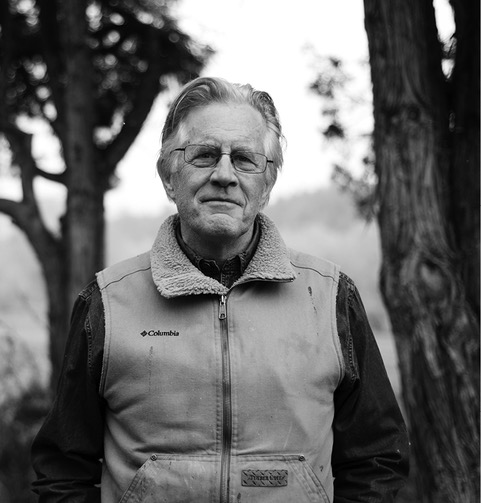 William deBuys of El Valle, Creative person, Writing/Literature: William deBuys is an internationally recognized author and conservationist, who has worked throughout his lengthy literary career to celebrate New Mexico'south distinctive peoples and landscapes. The celebrated writer, who has lived in New United mexican states since 1972, describes his writing process equally trying to "capture the wonderful complexity of this thing that we call life and communicate that complexity and the sense of wonder that comes with it, the sense of passion and commitment, the desire to change information technology, and still the obligation to celebrate information technology equally information technology is." The writings of deBuys accept garnered numerous awards, and one of his books focused on New Mexico – River of Traps: A New United mexican states Mountain Life – was a finalist for the 1991 Pulitzer Prize. "He is one of a small-scale handful of authors I accept worked with whose prose is and so polished that information technology could go straight to the printer without whatsoever editorial piece of work," said Elizabeth C. Hadas, Director Emerita of University of New Mexico Press. "I know of no other author whose piece of work on New United mexican states is then broad and deep with appeal to so many audiences. His work transcends categories." Jack Loeffler, who received a Governor's Arts Accolade in 2008, called deBuys "one of New Mexico'due south greatest human being treasures." "One of William deBuys' near compelling characteristics is that he practices what he articulates in his writing." Loeffler said. "For over iv decades, he has tended his ain farm and ranchland in rural northern New United mexican states. … He is deeply aware of the wealth of perspective that is retained in the diverse human being cultures indigenous to New Mexico, and has worked hand in hand with people of the state both to glean their inherent wisdom, and to present their voices to the wider cultural audience."
William deBuys of El Valle, Creative person, Writing/Literature: William deBuys is an internationally recognized author and conservationist, who has worked throughout his lengthy literary career to celebrate New Mexico'south distinctive peoples and landscapes. The celebrated writer, who has lived in New United mexican states since 1972, describes his writing process equally trying to "capture the wonderful complexity of this thing that we call life and communicate that complexity and the sense of wonder that comes with it, the sense of passion and commitment, the desire to change information technology, and still the obligation to celebrate information technology equally information technology is." The writings of deBuys accept garnered numerous awards, and one of his books focused on New Mexico – River of Traps: A New United mexican states Mountain Life – was a finalist for the 1991 Pulitzer Prize. "He is one of a small-scale handful of authors I accept worked with whose prose is and so polished that information technology could go straight to the printer without whatsoever editorial piece of work," said Elizabeth C. Hadas, Director Emerita of University of New Mexico Press. "I know of no other author whose piece of work on New United mexican states is then broad and deep with appeal to so many audiences. His work transcends categories." Jack Loeffler, who received a Governor's Arts Accolade in 2008, called deBuys "one of New Mexico'due south greatest human being treasures." "One of William deBuys' near compelling characteristics is that he practices what he articulates in his writing." Loeffler said. "For over iv decades, he has tended his ain farm and ranchland in rural northern New United mexican states. … He is deeply aware of the wealth of perspective that is retained in the diverse human being cultures indigenous to New Mexico, and has worked hand in hand with people of the state both to glean their inherent wisdom, and to present their voices to the wider cultural audience."
 Gustavo Victor Goler of Taos, Artist, Master Santero/Spanish Colonial Bultos and Retablos: Raised in Santa Iron, Gustavo Victor Goler'south early on years were spent apprenticing in his family unit's conservation studios where he learned forest carving skills. Goler began carving Santos in loftier school as a hobby, creating a few pieces a year that he would give to family unit and friends. In 1988, Goler was juried into Traditional Spanish Market place where his loftier level of craftsmanship and innovative design have garnered him dozens of awards including being recognized in 2016 with a Master's Award for Lifetime Accomplishment, the highest accolade given by the Spanish Colonial Arts Society. "It is fair to say, that through his dedication and commitment Mr. Goler has become the Michelangelo of New United mexican states'southward Spanish Colonial traditions," said James M. Long, the sometime chairman of the board of the Spanish Colonial Gild. "I believe Mr. Goler has personally set a new standard of beauty and quality in the New Mexican Santero fine art earth." Goler is renowned for not only his art just his in-depth research of New United mexican states Santeros. Along with his study of artists and their history, Goler has immersed himself in the history of saints and their iconography. In 2005, Goler exhibited a 17-year retrospective evidence of his personal work at the National Hispanic Cultural Center in Albuquerque, and in 2011 he was honored by the Millicent Rogers Museum with a 25-year retrospective exhibition. He has also been honored in his hometown of Taos with a distinguished artist accolade for his achievements both in art, as well equally conservation. Goler led the technical restoration effort of the chantry screen at Santa Cruz de la Canada. He designed the altar screen at Costilla and routinely offers his cognition to other restoration efforts, such equally the Nuestra Senora del Rosario church building in Truchas.
Gustavo Victor Goler of Taos, Artist, Master Santero/Spanish Colonial Bultos and Retablos: Raised in Santa Iron, Gustavo Victor Goler'south early on years were spent apprenticing in his family unit's conservation studios where he learned forest carving skills. Goler began carving Santos in loftier school as a hobby, creating a few pieces a year that he would give to family unit and friends. In 1988, Goler was juried into Traditional Spanish Market place where his loftier level of craftsmanship and innovative design have garnered him dozens of awards including being recognized in 2016 with a Master's Award for Lifetime Accomplishment, the highest accolade given by the Spanish Colonial Arts Society. "It is fair to say, that through his dedication and commitment Mr. Goler has become the Michelangelo of New United mexican states'southward Spanish Colonial traditions," said James M. Long, the sometime chairman of the board of the Spanish Colonial Gild. "I believe Mr. Goler has personally set a new standard of beauty and quality in the New Mexican Santero fine art earth." Goler is renowned for not only his art just his in-depth research of New United mexican states Santeros. Along with his study of artists and their history, Goler has immersed himself in the history of saints and their iconography. In 2005, Goler exhibited a 17-year retrospective evidence of his personal work at the National Hispanic Cultural Center in Albuquerque, and in 2011 he was honored by the Millicent Rogers Museum with a 25-year retrospective exhibition. He has also been honored in his hometown of Taos with a distinguished artist accolade for his achievements both in art, as well equally conservation. Goler led the technical restoration effort of the chantry screen at Santa Cruz de la Canada. He designed the altar screen at Costilla and routinely offers his cognition to other restoration efforts, such equally the Nuestra Senora del Rosario church building in Truchas.
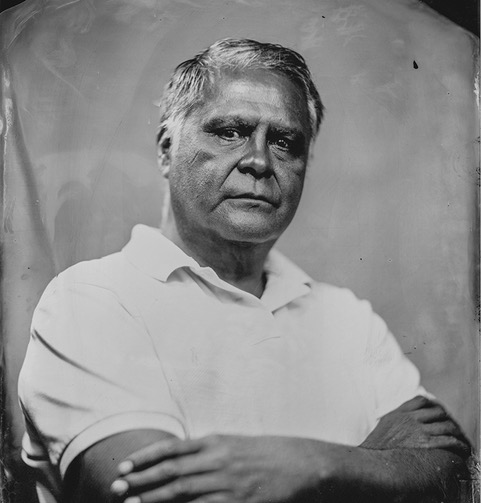 Russell Sanchez of San Ildefonso Pueblo, Artist, Pottery: Russell Sanchez of San Ildefonso Pueblo, who has been making pottery since he was 12 years old, has connected a Native American tradition that has been in New Mexico for hundreds of years. "By adhering to his methods and even at times expanding on the designs and shapes of his pieces he is showing the side by side generation what is possible," said nominator Nancy Youngblood, who received a Governor'south Arts Award for pottery in 2004. "He has non just followed the long standing traditions of San Ildefonso Pueblo's pottery, but has as well brought a new level of excellence to the art form." Sanchez follows the traditional ways of gathering dirt, processing it, and creating it through the traditional scroll method. Sanchez fires his pieces using the traditional methods of an open outside fire using cedar woods, dried cow pies and dried horse manure. "His strict dedication to the traditional means is not only admirable but rare in this twenty-four hour period and age, where many have lost touch with this sacred process," Youngblood said. While keeping with tradition, Sanchez has not only revived forms that were washed in the 1800s simply has also established new contemporary styles that show his originality and talent as an artist. Youngblood said she in one case asked Sanchez what he was nearly proud of: "He told me, 'Giving recognition to the potters of the past and carrying on their work. We are part of a living tradition.'" In addition to his art, Sanchez also has a passion for skiing, rafting and kayaking. His interest in rafting led him to exist a guide in the 1990s and he has participated in expeditions worldwide, navigating rivers in the Grand Canyon, Peru and North Africa. Every bit a result of his outdoor pursuits, the themes of nature are frequently reflected in his pottery. Sanchez has received numerous awards for his pottery including Best of Division at both the Santa Fe Indian Market and the Heard Indian Market. In 2011, he was awarded the special "Tony Da Honor" for Pottery at Santa Fe Indian Market.
Russell Sanchez of San Ildefonso Pueblo, Artist, Pottery: Russell Sanchez of San Ildefonso Pueblo, who has been making pottery since he was 12 years old, has connected a Native American tradition that has been in New Mexico for hundreds of years. "By adhering to his methods and even at times expanding on the designs and shapes of his pieces he is showing the side by side generation what is possible," said nominator Nancy Youngblood, who received a Governor'south Arts Award for pottery in 2004. "He has non just followed the long standing traditions of San Ildefonso Pueblo's pottery, but has as well brought a new level of excellence to the art form." Sanchez follows the traditional ways of gathering dirt, processing it, and creating it through the traditional scroll method. Sanchez fires his pieces using the traditional methods of an open outside fire using cedar woods, dried cow pies and dried horse manure. "His strict dedication to the traditional means is not only admirable but rare in this twenty-four hour period and age, where many have lost touch with this sacred process," Youngblood said. While keeping with tradition, Sanchez has not only revived forms that were washed in the 1800s simply has also established new contemporary styles that show his originality and talent as an artist. Youngblood said she in one case asked Sanchez what he was nearly proud of: "He told me, 'Giving recognition to the potters of the past and carrying on their work. We are part of a living tradition.'" In addition to his art, Sanchez also has a passion for skiing, rafting and kayaking. His interest in rafting led him to exist a guide in the 1990s and he has participated in expeditions worldwide, navigating rivers in the Grand Canyon, Peru and North Africa. Every bit a result of his outdoor pursuits, the themes of nature are frequently reflected in his pottery. Sanchez has received numerous awards for his pottery including Best of Division at both the Santa Fe Indian Market and the Heard Indian Market. In 2011, he was awarded the special "Tony Da Honor" for Pottery at Santa Fe Indian Market.
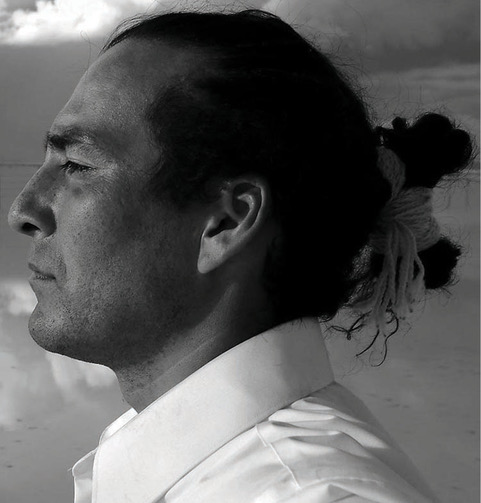 William (Will) Wilson is a Diné photographer who spent his formative years living on the Navajo Nation. Built-in in San Francisco in 1969, Wilson studied photography at the Academy of New Mexico (Dissertation Tracked MFA in Photography, 2002) and Oberlin College (BA, Studio Art and Art History, 1993). Wilson is renowned for combining digital applied science, historic photographic processes, operation and installation to address the themes that well-nigh concern him, including the impacts of cultural and ecology change on indigenous peoples, and the possibility of cultural survival and renewal. In 2007, Wilson won the Native American Fine Art Fellowship from the Eiteljorg Museum, and in 2010 was awarded a prestigious grant from the Joan Mitchell Foundation. Wilson has held visiting professorships at the Institute of American Indian Arts (1999-2000), Oberlin Higher (2000-01), and the University of Arizona (2006-08). From 2009 to 2011, Wilson managed the National Vision Project, a Ford Foundation funded initiative at the Museum of Contemporary Native Arts in Santa Fe, and helped to coordinate the New Mexico Arts Temporary Installations Made for the Environment (TIME) programme on the Navajo Nation. Wilson is part of the Science and Arts Inquiry Collaborative (SARC) which brings together artists interested in using science and applied science in their exercise with collaborators from Los Alamos National Laboratory and Sandia Labs as part of the International Symposium on Electronic Arts, 2012 (ISEA). Recently, Wilson completed an exhibition and artist residency at the Denver Art Museum and is currently the King Fellow creative person in residence at the School of Advanced Research in Santa Atomic number 26, NM. He also has headed the photography department at Santa Fe Community College.
William (Will) Wilson is a Diné photographer who spent his formative years living on the Navajo Nation. Built-in in San Francisco in 1969, Wilson studied photography at the Academy of New Mexico (Dissertation Tracked MFA in Photography, 2002) and Oberlin College (BA, Studio Art and Art History, 1993). Wilson is renowned for combining digital applied science, historic photographic processes, operation and installation to address the themes that well-nigh concern him, including the impacts of cultural and ecology change on indigenous peoples, and the possibility of cultural survival and renewal. In 2007, Wilson won the Native American Fine Art Fellowship from the Eiteljorg Museum, and in 2010 was awarded a prestigious grant from the Joan Mitchell Foundation. Wilson has held visiting professorships at the Institute of American Indian Arts (1999-2000), Oberlin Higher (2000-01), and the University of Arizona (2006-08). From 2009 to 2011, Wilson managed the National Vision Project, a Ford Foundation funded initiative at the Museum of Contemporary Native Arts in Santa Fe, and helped to coordinate the New Mexico Arts Temporary Installations Made for the Environment (TIME) programme on the Navajo Nation. Wilson is part of the Science and Arts Inquiry Collaborative (SARC) which brings together artists interested in using science and applied science in their exercise with collaborators from Los Alamos National Laboratory and Sandia Labs as part of the International Symposium on Electronic Arts, 2012 (ISEA). Recently, Wilson completed an exhibition and artist residency at the Denver Art Museum and is currently the King Fellow creative person in residence at the School of Advanced Research in Santa Atomic number 26, NM. He also has headed the photography department at Santa Fe Community College.
Major Contributors to the Arts:
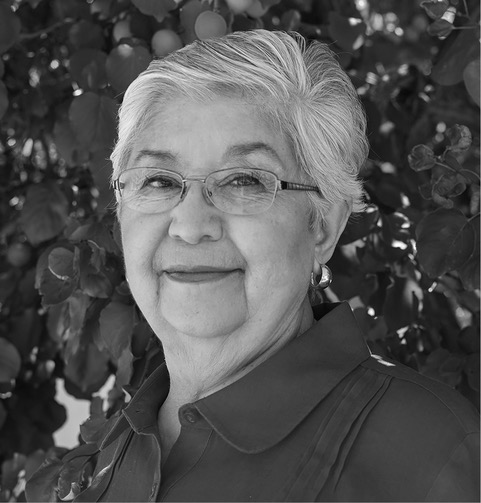 Helen R. Lucero of Albuquerque, Major Contributor to the Arts: Dr. Helen R. Lucero has spent her unabridged career helping to promote and educate the public nigh the Hispanic arts of New United mexican states. 1 of the first female Hispanic curators in the country, Lucero served as director of visual arts at the National Hispanic Cultural Eye, acquaintance curator at the Smithsonian's National Museum of American Art, curator of Hispanic Arts for the University of New Mexico Art Museum, and curator of Southwestern Hispanic Art at the Museum of International Folk Art (MOIFA). "Few scholars have been such pioneers both as a researcher in the globe of traditional arts, and every bit a ceiling-shattering leader in the world of professional museum practise," said Andrew Connors, Curator of Fine art at the Albuquerque Museum. "Helen has opened so many doors, non but for herself, merely for subsequent generations hoping to contribute something substantial to the world of ideas." Built-in in Vadito, Lucero grew up in her grandparent'due south adobe house with no running water, an outhouse in the back, and a kerosene lamp to low-cal her loftier schoolhouse homework. She was the first in her family to go to college and one of a very small-scale number of Hispanic women to receive a Ph.D. from the University of New Mexico in 1986. Catalina Delgado Trunk, who received a Governor's Arts Laurels in 2015, said Lucero has been a steady mentor and supporter of her artwork. "She has constructively critiqued my work past encouraging me to develop every bit an artist," Delgado Trunk said. "Her gift to me is priceless." Lucero was key to the opening of the ground-breaking Hispanic Heritage Wing at MOIFA – the commencement museum gallery in the country defended to the Hispanic arts – and was co-curator of its celebrated countdown exhibition Familia y Fe, a tribute to the artistic legacy and civilization of Hispanic New Mexico. She co-authored Chimayo Weaving: The Transformation of a Tradition, the first scholarly publication to recognize this weaving tradition and the weavers of northern New United mexican states. "She remains the skilful on Chimayo weaving and its history," said Robin Farwell Gavin, primary curator of the Museum of Spanish Colonial Art, who showtime met Lucero when they were both new curators at MOIFA. "Although I had studied Spanish Colonial fine art at UNM and lived in New Mexico since 1974, what I had learned about the traditional fine art of New Mexico was academic, stylistic and distant. What Helen taught me was most its soul."
Helen R. Lucero of Albuquerque, Major Contributor to the Arts: Dr. Helen R. Lucero has spent her unabridged career helping to promote and educate the public nigh the Hispanic arts of New United mexican states. 1 of the first female Hispanic curators in the country, Lucero served as director of visual arts at the National Hispanic Cultural Eye, acquaintance curator at the Smithsonian's National Museum of American Art, curator of Hispanic Arts for the University of New Mexico Art Museum, and curator of Southwestern Hispanic Art at the Museum of International Folk Art (MOIFA). "Few scholars have been such pioneers both as a researcher in the globe of traditional arts, and every bit a ceiling-shattering leader in the world of professional museum practise," said Andrew Connors, Curator of Fine art at the Albuquerque Museum. "Helen has opened so many doors, non but for herself, merely for subsequent generations hoping to contribute something substantial to the world of ideas." Built-in in Vadito, Lucero grew up in her grandparent'due south adobe house with no running water, an outhouse in the back, and a kerosene lamp to low-cal her loftier schoolhouse homework. She was the first in her family to go to college and one of a very small-scale number of Hispanic women to receive a Ph.D. from the University of New Mexico in 1986. Catalina Delgado Trunk, who received a Governor's Arts Laurels in 2015, said Lucero has been a steady mentor and supporter of her artwork. "She has constructively critiqued my work past encouraging me to develop every bit an artist," Delgado Trunk said. "Her gift to me is priceless." Lucero was key to the opening of the ground-breaking Hispanic Heritage Wing at MOIFA – the commencement museum gallery in the country defended to the Hispanic arts – and was co-curator of its celebrated countdown exhibition Familia y Fe, a tribute to the artistic legacy and civilization of Hispanic New Mexico. She co-authored Chimayo Weaving: The Transformation of a Tradition, the first scholarly publication to recognize this weaving tradition and the weavers of northern New United mexican states. "She remains the skilful on Chimayo weaving and its history," said Robin Farwell Gavin, primary curator of the Museum of Spanish Colonial Art, who showtime met Lucero when they were both new curators at MOIFA. "Although I had studied Spanish Colonial fine art at UNM and lived in New Mexico since 1974, what I had learned about the traditional fine art of New Mexico was academic, stylistic and distant. What Helen taught me was most its soul."
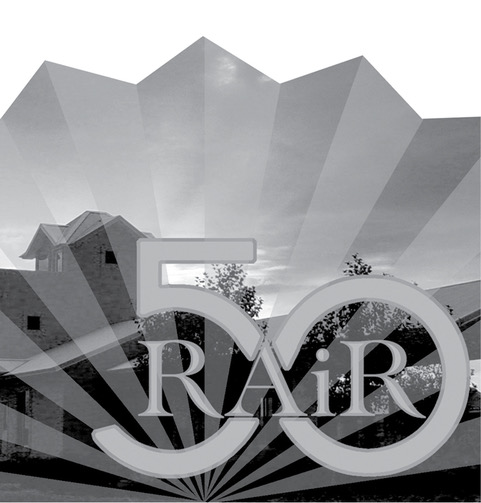 Roswell Artist-in-Residence Program of Roswell, Major Contributor to the Arts: The Roswell Creative person-in-Residence (RAiR) Program, which is celebrating its 50th anniversary this year, provides well-nigh half dozen contemporary artists a twelvemonth with "a gift of time" -- a one-yr residency with a firm, studio, living stipend and an exhibition at the Roswell Museum and Fine art Center. Founded in 1967 by artist, oilman and philanthropist Donald B. Anderson, RAiR was envisioned as a program solely for the benefit of artists, without any obligations that would hinder creativity. Since its inception, RAiR has hosted some 238 artists from the United States, Europe, Japan, Chile and Australia, including nationally noted artists such equally Robert Colescott, Luis Jimenez, Milton Resnick, Alison Saar, Jane South, and Kumi Yamashita. Eight RAiR artists have received a Governor'south Arts Award in New Mexico: Jiminez in 1993; Howard Cook in 1979; Cook's married woman Barbara Latham in 1988; Elmer Schooley in 1986; Frank McCulloch in 2001; William Goodman in 2005; Eddie Dominguez in 2006; and Edward Vega in 2009. In addition, Anderson himself received a Governor's Arts Award in 1983 every bit a major contributor to the arts. "These honors speak to the quotient of the programme and its participants," said nominator Brinkman Randle, president of the Roswell Interarts Organization. RAiR has "served as a mecca for artists from throughout the earth, many of whom have remained in Roswell and New Mexico past their residencies – enhancing our land'southward cultural compensation," Randle said. The RAiR artists "get out with studio subject area, personal contacts and a greater sense of i's wealth equally an artist," Goodman said. "I tin testify that in my own case the experience was very valuable. …An artist can exist brimming full of skill, imagination and ideas, but it likewise takes fourth dimension and money for these elements to come together to produce something worthwhile." Saar said her residency gave her an incredible amount of room and fourth dimension to explore new mediums and materials: "I bought my starting time chainsaw at Roswell and it escorted me into a whole body of life scale sculptures that I feel are at present my central focus in my work." In 2002, the RAiR Foundation was formed equally a nonprofit to oversee the RAiR Program and the Anderson Museum of Contemporary Art, the public face up of this remarkable residency program. RAiR artists have developed strong relationships inside the community and ofttimes play key roles in local arts education initiatives. The RAiR Program'south "gift of time" has not but impacted the work of emerging and established artists from throughout the world but has contributed to the vitality of contemporary visual arts in New United mexican states, especially through the stiff and sustained exhibition programs of the Roswell Museum and Fine art Center and the Anderson Museum of Contemporary Fine art, said Caroline Grand. Brooks, the executive director of the Roswell Museum and Art Heart and Laurie J. Rufe, the former executive director. "RAiR artists have taught classes, led our Second Saturday free art programs, and contributed to our events and educational outreach," Brooks and Rufe said. In October, the Roswell Museum and Art Center, will mountain an ambitious exhibition to celebrate the RAiR Program and its alumni and to commemorate the Roswell Museum and Art Center'due south 80th and the RAiR Plan's 50th anniversaries.
Roswell Artist-in-Residence Program of Roswell, Major Contributor to the Arts: The Roswell Creative person-in-Residence (RAiR) Program, which is celebrating its 50th anniversary this year, provides well-nigh half dozen contemporary artists a twelvemonth with "a gift of time" -- a one-yr residency with a firm, studio, living stipend and an exhibition at the Roswell Museum and Fine art Center. Founded in 1967 by artist, oilman and philanthropist Donald B. Anderson, RAiR was envisioned as a program solely for the benefit of artists, without any obligations that would hinder creativity. Since its inception, RAiR has hosted some 238 artists from the United States, Europe, Japan, Chile and Australia, including nationally noted artists such equally Robert Colescott, Luis Jimenez, Milton Resnick, Alison Saar, Jane South, and Kumi Yamashita. Eight RAiR artists have received a Governor'south Arts Award in New Mexico: Jiminez in 1993; Howard Cook in 1979; Cook's married woman Barbara Latham in 1988; Elmer Schooley in 1986; Frank McCulloch in 2001; William Goodman in 2005; Eddie Dominguez in 2006; and Edward Vega in 2009. In addition, Anderson himself received a Governor's Arts Award in 1983 every bit a major contributor to the arts. "These honors speak to the quotient of the programme and its participants," said nominator Brinkman Randle, president of the Roswell Interarts Organization. RAiR has "served as a mecca for artists from throughout the earth, many of whom have remained in Roswell and New Mexico past their residencies – enhancing our land'southward cultural compensation," Randle said. The RAiR artists "get out with studio subject area, personal contacts and a greater sense of i's wealth equally an artist," Goodman said. "I tin testify that in my own case the experience was very valuable. …An artist can exist brimming full of skill, imagination and ideas, but it likewise takes fourth dimension and money for these elements to come together to produce something worthwhile." Saar said her residency gave her an incredible amount of room and fourth dimension to explore new mediums and materials: "I bought my starting time chainsaw at Roswell and it escorted me into a whole body of life scale sculptures that I feel are at present my central focus in my work." In 2002, the RAiR Foundation was formed equally a nonprofit to oversee the RAiR Program and the Anderson Museum of Contemporary Art, the public face up of this remarkable residency program. RAiR artists have developed strong relationships inside the community and ofttimes play key roles in local arts education initiatives. The RAiR Program'south "gift of time" has not but impacted the work of emerging and established artists from throughout the world but has contributed to the vitality of contemporary visual arts in New United mexican states, especially through the stiff and sustained exhibition programs of the Roswell Museum and Fine art Center and the Anderson Museum of Contemporary Fine art, said Caroline Grand. Brooks, the executive director of the Roswell Museum and Art Heart and Laurie J. Rufe, the former executive director. "RAiR artists have taught classes, led our Second Saturday free art programs, and contributed to our events and educational outreach," Brooks and Rufe said. In October, the Roswell Museum and Art Center, will mountain an ambitious exhibition to celebrate the RAiR Program and its alumni and to commemorate the Roswell Museum and Art Center'due south 80th and the RAiR Plan's 50th anniversaries.
Source: https://nmarts.org/2017-governors-awards-for-excellence-in-the-arts.html
Enregistrer un commentaire for "Governors Arts Awards for Excellence in Jackson in 1999"